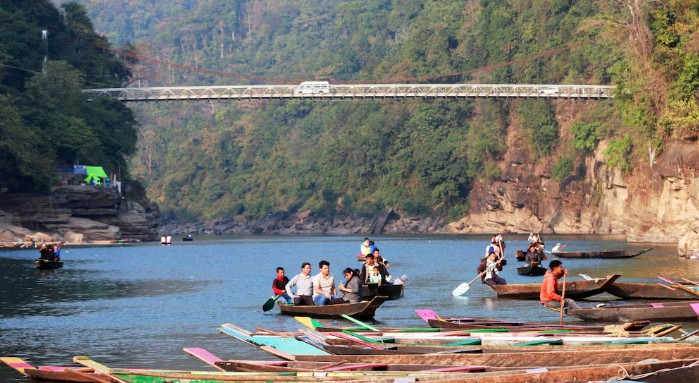India’s 4,156-kilometre border with Bangladesh is no longer a mere line on a map; it has become a moral frontier where the Republic’s constitutional promises are daily betrayed. May 2025 exposed that rupture with chilling clarity. In forests, rivers and midnight lay-bys, men, women and children were stripped of identity, dignity and sometimes even clothing, then cast across the frontier as though they were contraband.
Hundreds of people—including pregnant women, children, and elderly individuals—were expelled across multiple districts in Bangladesh. Some had spent months in Indian detention centres, while others were abruptly seized and deported without any legal procedure. In the dense Sundarbans mangrove forest, 78 people were abandoned without food or shelter, left to navigate tidal creeks and wildlife until local fishermen rescued them. In another chilling case, five women and children were stripped of their belongings, had empty plastic bottles tied to their bodies, and were thrown into the Feni River at night—saved only by the timely intervention of Border Guard Bangladesh (BGB) and nearby villagers.
The psychological violence of these acts is matched only by their bureaucratic coldness. Refugees with UNHCR cards were disregarded, and documented Indian citizens with pending court cases—like schoolteacher Khairul Islam—were blindfolded, beaten, and dumped in unfamiliar borderlands.
These are not random anomalies. These are orchestrated acts of abandonment—designed to strip individuals not just of legal status, but of their humanity.
Plato, in The Republic, imagined a just polis where each class fulfilled its function, and the state protected its most vulnerable. When a state instead expels its weakest—refugees, minorities, stateless children—it abandons Plato’s kallipolis and becomes what modern critics call a banishment state: one that sustains social order through exclusion rather than care.
Michel Foucault warned that modern power often works not through overt coercion but through surveillance, classification, and administrative control. India’s National Register of Citizens (NRC) exemplifies this: digitised biometric data, ancestral records, and residency logs are used to sort the “documented” from the “disposable.” What follows is civil death—loss of rights, livelihood, and ultimately, identity.
Meanwhile, the rhetoric used by many Indian politicians now echoes the sectarianism of the Two-Nation Theory—the same ideology that fuelled the trauma of Partition in 1947. By branding Muslims, particularly Rohingyas and Bengali-speakers, as “illegal infiltrators,” the Indian state is not only reviving a divisive logic, it is actively re-politicising borders already scarred by blood and betrayal.
Together, these frameworks make clear that the push-in policy is not merely a technical or bureaucratic response to migration. It is a philosophical betrayal of India’s pluralistic promise.
India is not a party to the 1951 Refugee Convention. But it is bound by customary international law, including the principle of non-refoulement, which prohibits returning individuals to countries where they may face harm. India is also a signatory to the ICCPR and the Convention on the Rights of the Child, both of which enshrine the right to due process and protection for vulnerable persons.
These obligations have been repeatedly violated. Push-ins occur without judicial oversight, without procedural guarantees, and without any regard for humanitarian standards. Stateless persons and documented refugees alike are discarded without recourse.
Borders are mirrors. And in India’s reflection, one now sees shadows where rights should be. It targets the very people it once claimed to protect—transforming security personnel into agents of erasure, and borderlands into theatres of exile.
The Bruno Latour model of the state—where legitimacy derives from institutional trust—no longer holds. India retains its roads, walls, and bureaucracies, but its moral infrastructure is collapsing. It is a nation equipped with courts but unwilling to deliver justice.
Yes, India still holds elections. But democracy is more than ballots. It is about rule of law, civil dignity, and minority protection. Today, India wears the skin of a democracy while operating with the muscles of majoritarian authoritarianism.
Policies like the CAA, NRC, and covert deportations reveal a state that no longer protects diversity—it polices it. The push-in crisis exposes a deeper transformation: from republic to regime.
Children drifting in rivers. Teachers blindfolded and dumped. Refugees treated as waste. These are not images of strength. They are the signs of a state afraid of its own plurality—unable to tolerate the lives that fall outside its narrowed identity.
India wants to lead South Asia. It wants to be respected globally. But leadership is not built on silence, or force. It is built on trust, law, and the courage to protect the vulnerable.
Right now, India is not leading. It is retreating—into fear, into division, into failure.


